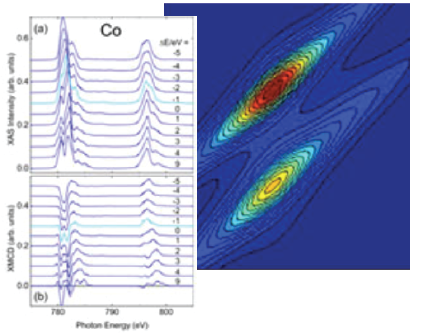About
A two-day workshop on the theoretical and experimental aspects of X-ray absorption, X-ray emission, photoemission and Resonant Inelastic X-ray Scattering.

This workshop describes the fundamental aspects and new developments in x-ray absorption spectroscopy (XAS) and resonant inelastic x-ray scattering (RIXS). In soft X-ray RIXS, one scans through the 2p XAS edge and measures the optical excitation range, while in hard X-ray RIXS the 1s XAS edge is scanned and the core-to-core emission recorded. The present experimental resolution allows the detailed observation of the electronic structure, including the determination of crystal field parameters, covalency parameters and spin-orbit coupling. Combining RIXS and magnetic circular dichroism in RIXS-MCD experiments, both in the soft and hard x-ray range, opens the field of XMCD to the more detailed 2-dimensional RIXS data maps. The options of angular dependent RIXS measurements open many new possibilities to study details of the electronic and magnetic structure of transition metal systems.
This workshop will introduce the fundamental aspects of RIXS with applications in solid state physics, catalysis and (bio-) inorganic chemistry. Hands-on tutorials will further enable the participant to simulate experimental results. Additional time will be given to own projects of the participants.
The CTM suite of programs developed by Frank de Groot has been successful in simulating RIXS data and shedding light on detailed electronic structure descriptions of molecular systems. If you would like to get more information on CTM4XAS, CTM4RIXS and CTM4DOC or download the software, see the CTM4XAS website.
The workshop will be held in-person, but a zoom link will also be provided to follow the talks remotely. However, in-person attendance is highly recommended to gain most out of the workshop.
FUNDING
Funding for the RIXS workshop is provided by NIH, DOE-BES and DOE-BER.
REGISTRATION
The course is free to participants.
